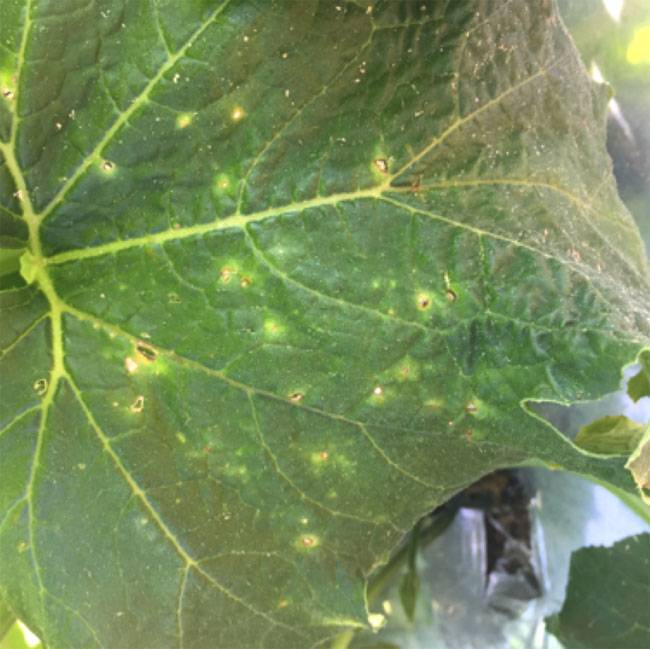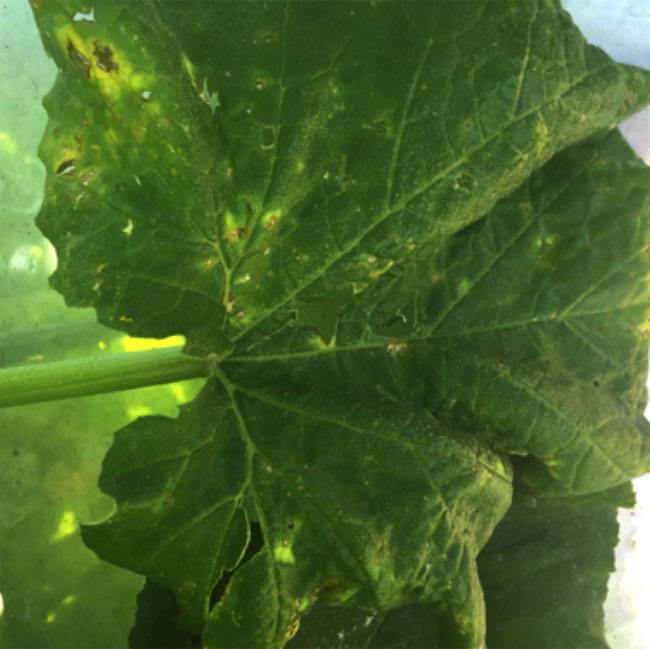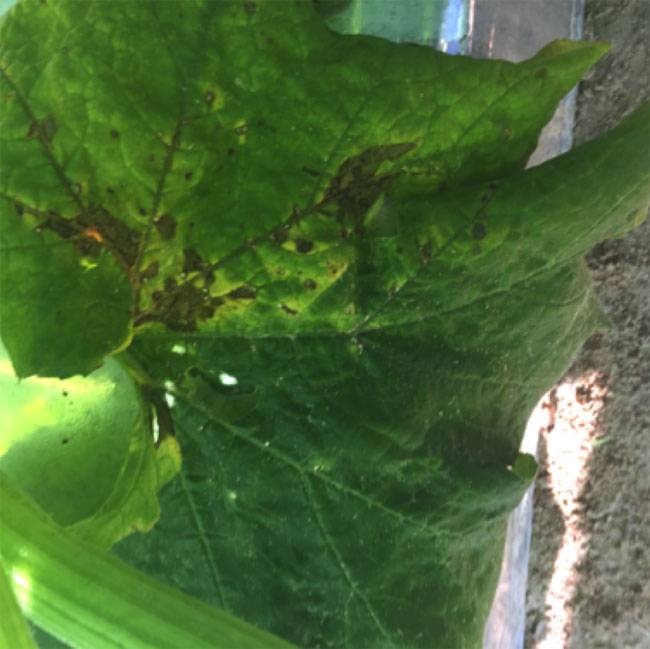Xanthomonas leaf spot, caused by Xanthomonas cucurbitae, is a bacterial disease affecting cucurbits like cucumber, pumpkin, winter squash, and gourds. Though rare, watermelon may also exhibit symptoms. The disease is seed-borne and thrives under warm, humid conditions, leading to significant crop damage.
Key Symptoms
Leaf Spots:
- Small, angular spots with a yellow halo visible from both leaf surfaces.
- Spots may enlarge and coalesce, forming larger blighted areas.
Affected Plant Parts:
- Symptoms are most evident on leaves, especially under warm, humid conditions.
Blight on Pumpkin:
- In pumpkins, the spots merge, leading to extensive tissue blight.
Disease Development
Pathogen Survival:
- The bacterium X. cucurbitae is seed-borne and overwinters in crop debris.
Environmental Favorability:
- Infection is favored by:
- High temperatures (25–30°C ).
- High relative humidity.
- Heavy rains, dew, or overhead irrigation.
Temperature for Growth:
- Minimum: 4–6°C.
- Optimum: 24–30°C.
- Maximum: 34–36°C.
Management Tips
Cultural Practices:
- Use certified, disease-free seeds.
- Rotate crops and avoid planting cucurbits in the same location for consecutive seasons.
Sanitation:
- Remove and destroy infected debris to reduce inoculum sources.
Irrigation Management:
- Avoid overhead irrigation to minimize leaf wetness.
Environmental Monitoring:
- Monitor weather conditions and humidity to anticipate disease outbreaks.
Chemical Control:
- Apply copper-based bactericides as preventive measures, particularly during favorable conditions.
Xanthomonas leaf spot can cause significant damage to cucurbit crops if not managed effectively. Early detection, the use of clean seeds, and proper cultural practices are key to minimizing losses. Awareness of environmental factors that favor the disease is essential for timely intervention and control.









